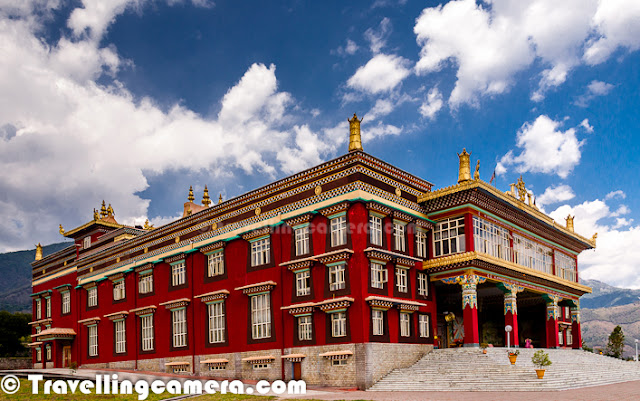Dzongsar Khyentse Chökyi Lödrö Institute – A Buddhist Revelation at Chauntra : by Vibha Malhotra, TOI (21st, July, 2012)
Often an unplanned detour opens a whole new world to you, and sometimes a chance visit to an unknown place can change the entire mood of your travel. A traveler will easily identify with these feelings. Not many people include the Dzongsar Khyentse Chökyi Lödrö Institute in their itineraries when they visit Himachal pradesh. In fact, very few people are even aware of its existence.
But while travelling on the pretty, narrow roads through
the tiny town of Chauntra in the Mandi district of Himachal Pradesh, you
do not realize when the dissonance of the everyday market scenes is
replaced by the harmony one often associates with spiritualism. For a
long time, you travel through fragrant fields and houses, from where
Tibetan faces gaze at you with such good-natured familiarity that you
feel that the land and the air are both opening their arms to you. As
you leave the houses behind, a blissful anticipation grows in your heart
and a red building finally breaks through the horizon and gradually
begins to take a shape.
The colour red isn’t usually associated with peace and
tranquility. But one look at this building and your perception of red
changes forever. The majestic building, which is the monastery, presides
over the sprawling grounds, surrounded by the green hills and resonant
with the chirping of birds and the gushing of wind in the trees. In the
circular dormitory, a lone monk sits against the pillar, engrossed in
his scholarly exploration of the theories of Buddhism, or perhaps
English, which is taught in the institute with a vision to enable the
Buddhist teachers to spread the teachings of Buddha across cultural and
linguistic borders. There is such concord between the Institute and the
surroundings that it is difficult to imagine what the landscape would
have looked like before the institute was constructed hardly a decade
back. The Tibetan way of life seems so prevalent that you have to force
yourself to remember that the institute was inaugurated as recently as
2004, by His Holiness the Dalai Lama and several other lamas and
dignitaries.
While sitting on the steps that lead up to the entrance
of the monastery or while clicking pictures, it is easy to lose yourself
in the serene surroundings. But it is important to remember that this
complex isn’t really on the tourist circuit and is primarily an
educational institute so there may be a chance that the tourists may not
be granted permission to enter on a particular day or at a specific
time. But at other times, if you are fortunate, you may even get an
opportunity to enter the monastery and walk barefoot along the wooden
desks where it is easy to conjure up the images of mystical monks
engaging in their holy discourse. The symphony of colours all around
carries you up to the magnificent, imposing statue of Buddha, surrounded
by intricately carved leaves and golden Buddhas in various poses.
Even though this encounter doesn’t come as a surprise, it
still retains the power to inspire you with awe and, if your mind is
receptive, a chance to realize how miniscule we actually are in the
larger scheme of things. One leaves this place either speechless or on a
spiritual high that only a long, meaningful interaction with nature can
induce.









.jpg)
Comments
Awesome photographs! Thanks for sharing :)
This is in very peaceful valley and very well maintained Monastery..